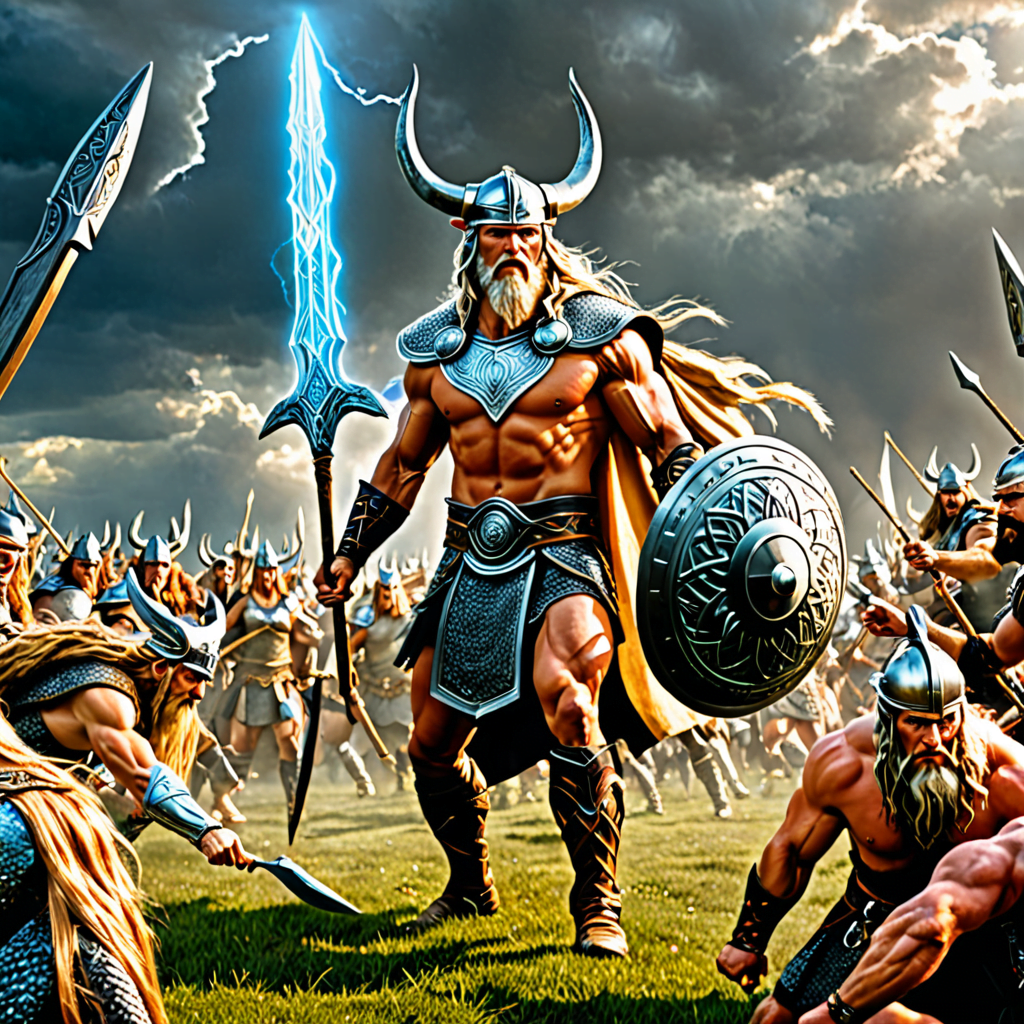The Mythical Labyrinth: Navigating the Stories of Creation
I. Introduction to Myth and Creation
Myths are foundational stories that cultures create to explain their origins, values, and the universe’s mysteries. They serve as a bridge between the known and the unknown, offering insights into humanity’s collective psyche and cultural significance.
Across the globe, creation stories vary, reflecting distinct societal values and beliefs. These narratives often contain common themes, including the emergence of life, the battle between chaos and order, and the role of divine beings in shaping existence.
The labyrinth, an intricate and often confusing structure, serves as a powerful metaphor for navigating these complex creation myths. It symbolizes the journey of understanding and the challenges faced in unraveling the mysteries of existence.
II. The Concept of the Labyrinth in Mythology
The labyrinth has its roots in ancient cultures, with historical origins tracing back to Greek mythology and beyond. The most famous labyrinth is that of Crete, designed by Daedalus to contain the Minotaur, a creature that embodied both human and beastly traits.
Symbolically, the labyrinth represents a journey or quest, embodying the trials faced by individuals as they seek knowledge or enlightenment. It serves as a tool for exploring complex ideas, illustrating that the path to understanding is often winding and fraught with obstacles.
III. Creation Myths in Different Cultures
Creation myths are found in every culture, each offering a unique perspective on the universe’s origins. Some major examples include:
- Genesis: The Judeo-Christian account of creation, describing God’s creation of the world in six days.
- Enuma Elish: The Babylonian epic detailing the creation of the world from the chaos of primordial waters.
- Popol Vuh: The Mayan creation narrative that recounts the gods’ attempts to create humanity.
A comparative analysis of these stories reveals recurring themes such as creation from chaos, the role of divine intervention, and the purpose of humanity. Deities and cosmic forces frequently shape the universe, reflecting cultural values and beliefs about the nature of existence.
IV. The Labyrinth of Greek Mythology
The story of Theseus and the Minotaur exemplifies the labyrinth’s role in Greek mythology. Theseus’s journey through the labyrinth symbolizes the struggle against inner fears and the quest for knowledge.
Analysis of this myth reveals that the labyrinth represents not only a physical challenge but also a metaphor for human struggle and enlightenment. It reflects broader themes of existence, such as the duality of human nature and the pursuit of truth amid confusion.
V. Eastern Perspectives on Creation
Eastern philosophies offer rich creation narratives that often intertwine spirituality and cosmology. For example:
- Hinduism: The creation myth involves the cosmic being Vishnu, who creates the universe from the primordial ocean.
- Buddhism: Focuses on the cyclical nature of existence and creation, emphasizing impermanence.
- Chinese Mythology: The story of Pangu, who separates the heavens and the earth, represents creation from chaos.
In these narratives, the interplay of chaos and order is a common thread, illustrating the labyrinthine nature of existence and the complex relationships between creation and destruction.
VI. Indigenous Creation Narratives
Indigenous cultures often rely on oral tradition to convey creation stories, with deep connections to their land and spirituality. For example:
- Native American Myths: Many tribes have unique stories, such as the creation of the world from a giant turtle or the emergence from a primordial underworld.
- Aboriginal Australian Stories: The Dreamtime narratives describe the ancestral beings that shaped the land and its inhabitants.
The labyrinth motif appears in these narratives as a symbol of the journey through life, reflecting the intrinsic connection between people and nature. These stories emphasize the importance of oral tradition in preserving cultural identity and wisdom.
VII. The Role of Nature in Creation Myths
Natural elements such as earth, water, fire, and air play significant roles in creation stories across cultures. They often personify the forces that shape existence, reflecting humanity’s relationship with the environment.
The labyrinth can be seen as a representation of this relationship, illustrating the complexity of navigating the natural world. Environmental insights gleaned from these mythological narratives remind us of the interconnectedness of life and the importance of respecting nature.
VIII. Modern Interpretations of Creation Myths
In contemporary society, science and technology have influenced traditional creation stories. While some view myths as outdated, others find relevance in retelling these narratives to address modern concerns.
Contemporary adaptations of creation myths often explore themes of identity, ecological crises, and existential questions, bridging the gap between ancient wisdom and modern challenges. These retellings highlight the enduring relevance of ancient myths in today’s society.
IX. Psychological and Philosophical Implications
The labyrinth serves as a metaphor for the human psyche, representing the complexities of personal growth and self-discovery. Just as individuals navigate their internal labyrinths, they seek understanding and meaning in their lives.
Philosophically, the labyrinth invites reflection on the nature of existence and the human condition. It challenges individuals to confront their fears and uncertainties while embarking on a journey towards enlightenment.



